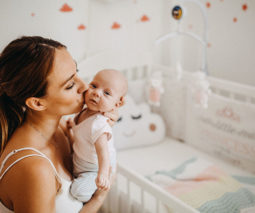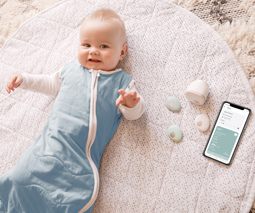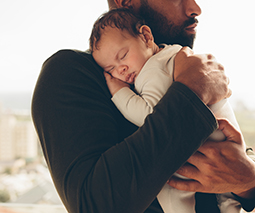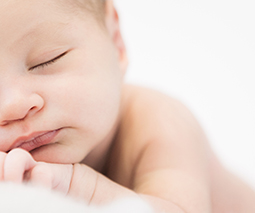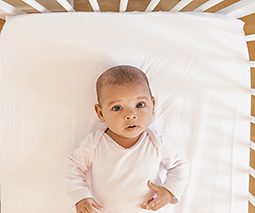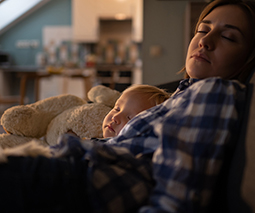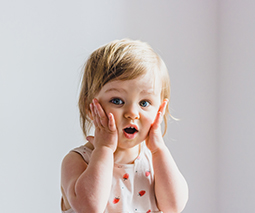What are the current safe sleeping guidelines for babies?

It’s vital to comply with safe sleeping guidelines to ensure the risk of SIDS or injury is minimised when babies are put to bed.
When the prettiness of nurseries often overrides what’s safest for little ones, it’s important to be reminded of what’s best for bubs.
Here are the current basic safe sleeping guidelines as researched and published by Red Nose.
The safe-sleeping basics
- Always sleep your baby on her back – not on her side or tummy.
- Ensure your baby’s face and head is uncovered.
- Make sure your baby is in a smoke-free environment.
- Create a safe sleeping environment for your baby.
- For the first 6 to 12 months of life, put your baby to bed in a safe sleeping environment in the same room as an adult caregiver.
- Breastfeed if possible.
Safe bedrooms for babies
To optimise safety at bedtime, ensure your baby has …
- A cot which complies with safety standards. Cots are the safest sleeping option for babies of all ages.
- A safe, properly fitting mattress. It should be firm, flat and clean.
- Safe bedding. Avoid loose bedding and do not place bumpers, lambswools, soft toys, pillows or cushions in the cot.
- A safe sleeping environment both night and day.
Note that it’s not safe for babies to be left sleeping in car seats, Moses baskets, prams or inclined baby rockers.

Sleeping baby safely in a cot
How can you sleep your baby as safely as possible in their cot? It’s easy!
- Make sure that your baby’s feet are positioned at the bottom of the cot.
- Ensure that bedding is tucked in securely and is not loose OR sleep your baby in a safe baby sleeping bag.
- Make sure that any hats or head coverings are removed at bedtime.
- Ensure you do not have any doonas, loose bedding, loose fabric, pillows, lambswool, cot bumpers or soft toys in your child’s cot or bassinet.
- Switch your baby from swaddle to baby safe sleeping bag once your baby can roll from back to tummy and to back again.
- Avoid using mobiles, bunting or other decorative items near your baby’s bed.
- Make sure that corded baby monitors or any other devices/appliances with cords are far from your child’s bed.
- Position your baby’s bed away from windows and especially away from curtains and blinds.
Checking in on your baby
Red Nose says that awareness and optimising your baby’s sleep environment will help to keep them safe.
- Parents are not expected to observe baby constantly. If your baby is sleeping in another room check baby regularly to ensure the baby remains on her back and her head and face remain uncovered.
-
Settle baby to sleep on her back but let her find the sleep position she feels most comfortable in. A safe cot and safe sleep environment are still necessary for older babies.
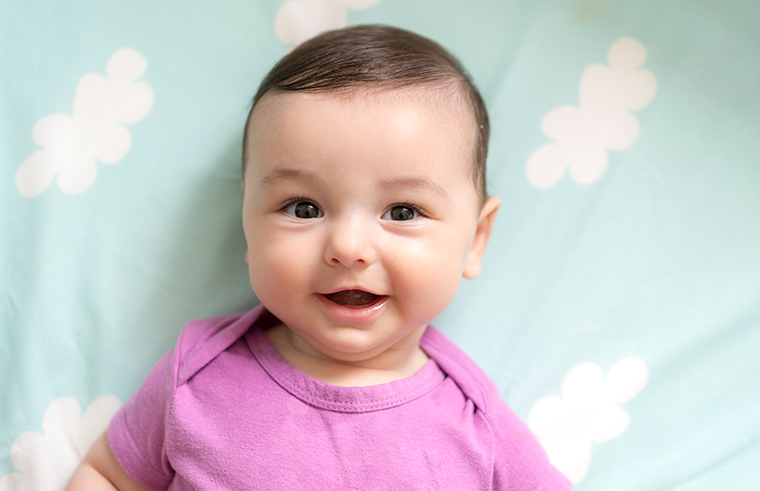
Safe sleeping in the home
Red Nose urges parents to get familiar with the following addition safe sleeping guidelines:
- Don’t leave baby unattended on an adult bed or bunk bed.
- Waterbeds, beanbags, couches, pillows and cushions are not safe for babies.
- Avoid falling asleep with the baby on a couch, sofa or chair.
- Keep heaters or electrical appliances well away from cots.
- Don’t use electric blankets, hot water bottles or wheat bags for babies.
- For daytime naps, the safety of the baby’s sleep environment is a priority over sharing the same room.
Safety and co-sleeping
Many parents choose to share a sleep surface with their baby. Red Nose stresses that this increases the risk of SIDS and other accidents. They recommend the following if you are sleeping on the same sleep surface as your baby.
AVOID baby sharing a sleep surface with a caregiver if any of the following are true:
- The caregiver is a smoker.
- The caregiver is under the influence of alcohol.
- The caregiver is under the influence of drugs that may sedate them.
- The baby is premature, small when born, or less than four months of age.
- The caregiver is very tired.
- There is bedding or pillows that could cover the baby.
- The baby could be trapped between the wall and bed, fall out of bed or be rolled on.
- The baby is sharing a bed with other children or pets.
- The baby will be sleeping on a couch, beanbag, waterbed or sagging mattress.

Sharing a sleep surface with baby
If you choose to share a sleep surface with your baby, Red Nose offers the following guidelines:
- Ensure baby is sleeping on her back.
- Ensure her face and head is uncovered.
- Ensure there is no extra bedding, pillows or soft toys in the sleep environment.
- Ensure the baby is not swaddled or wrapped up.
- Make sure the baby is next to one caregiver – not between two caregivers.
- Ensure the baby is not close to the edge of the bed.
- Do not surround the baby with pillows or other bedding ‘for safety’.
- Make sure baby is dressed in a baby sleeping bag and is not using the adult bedding.
